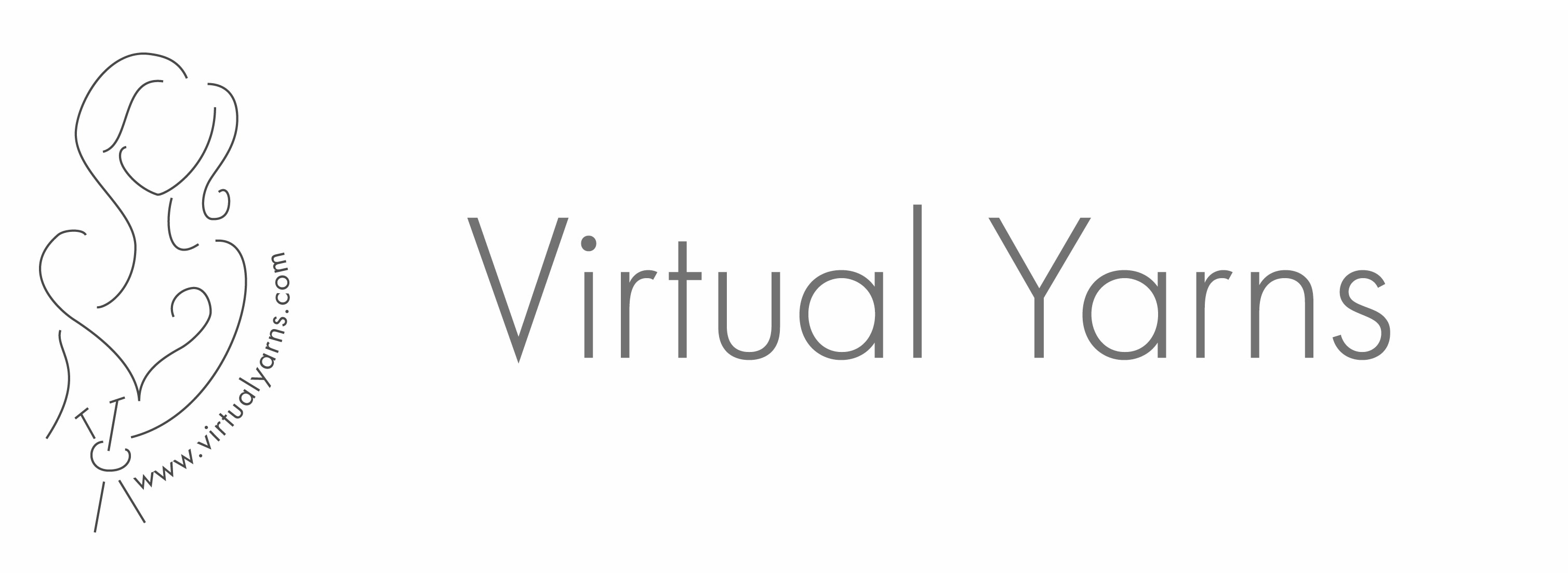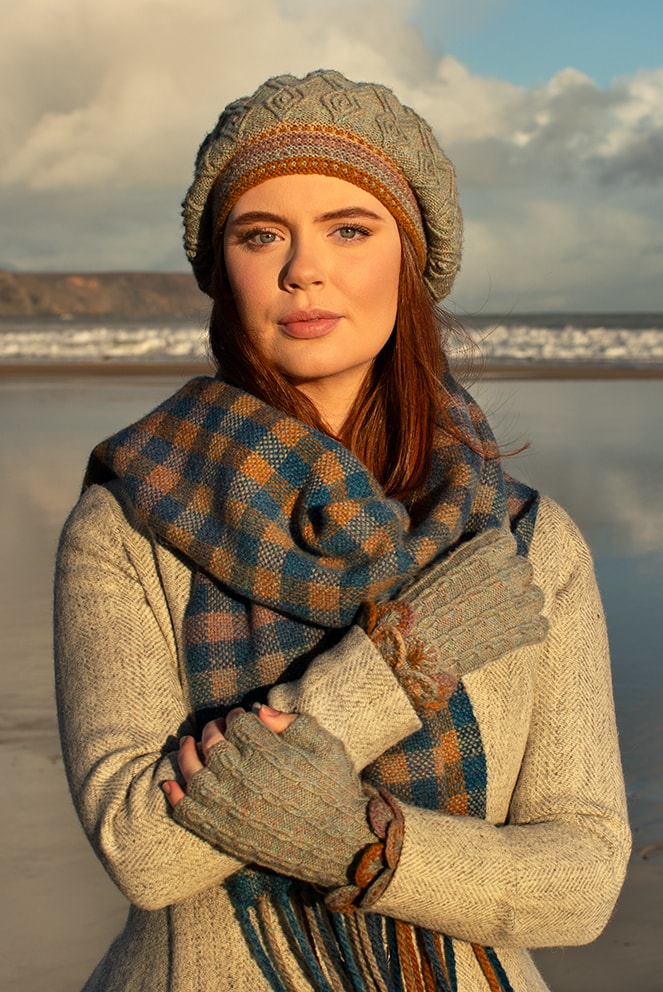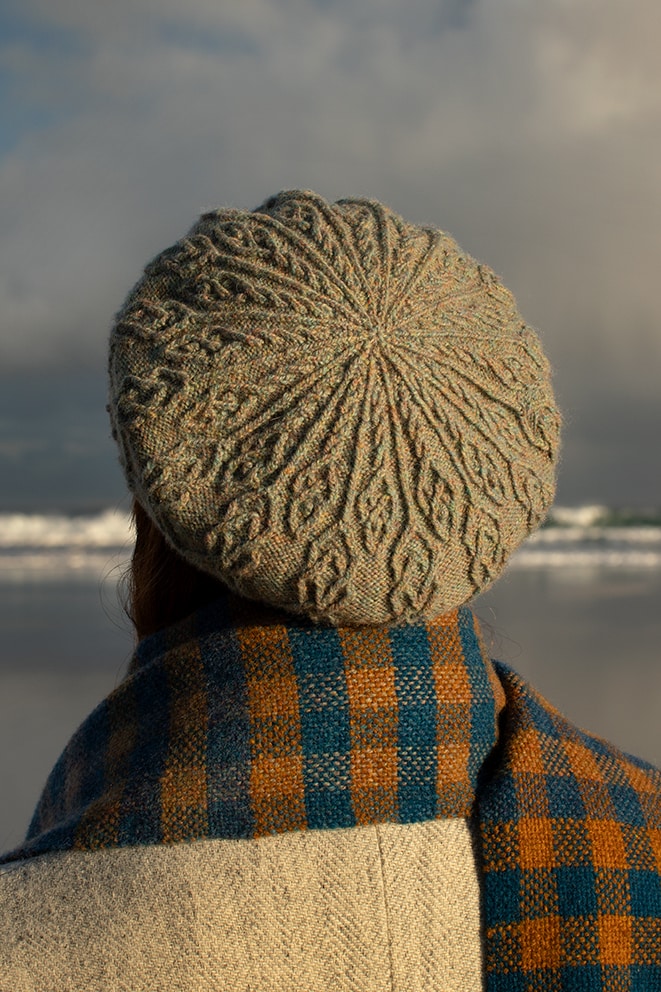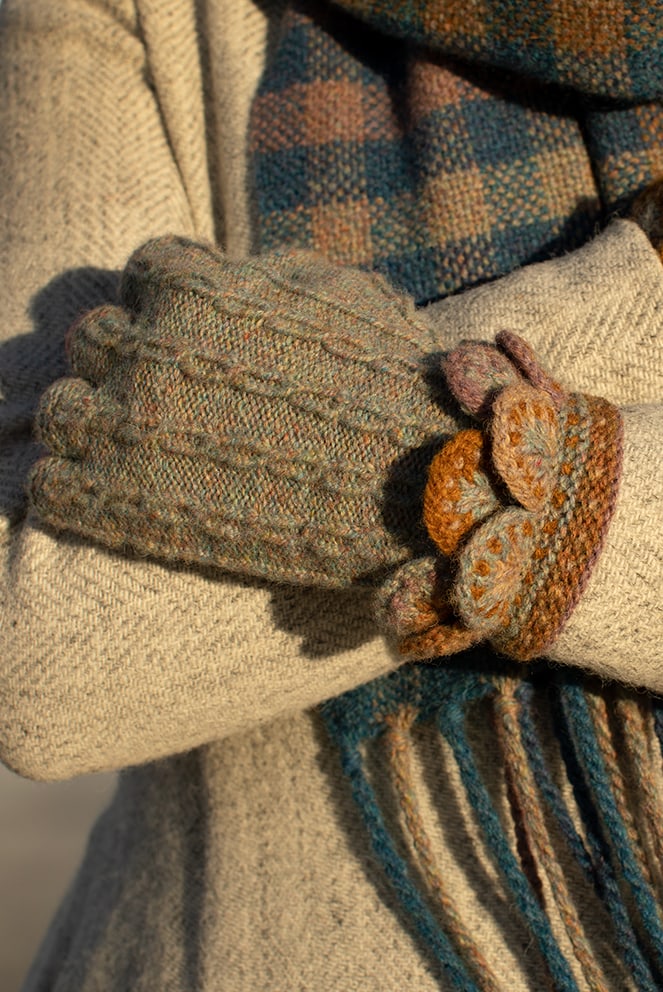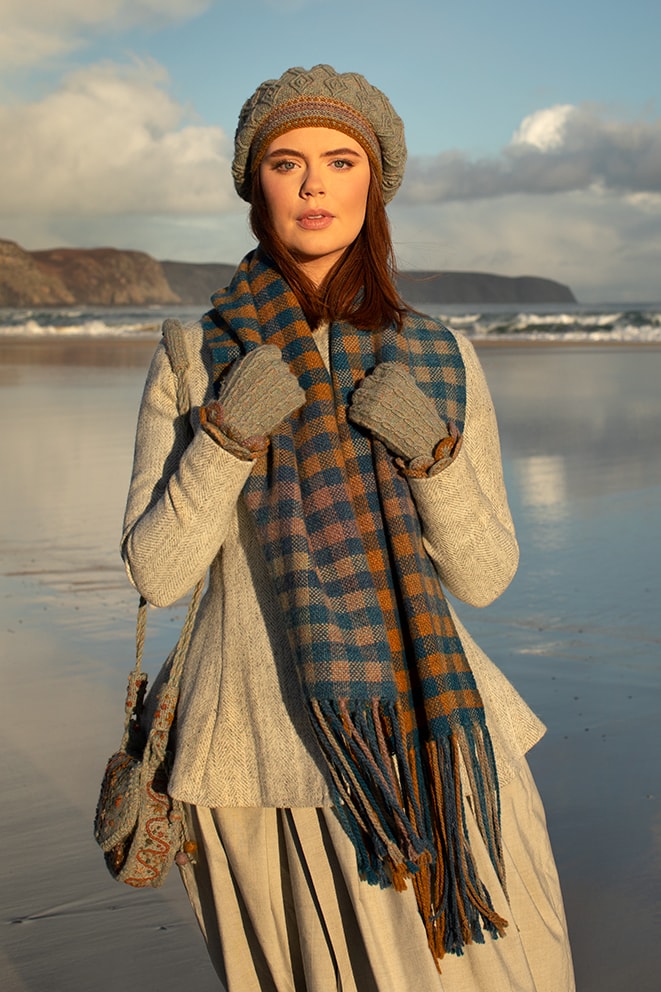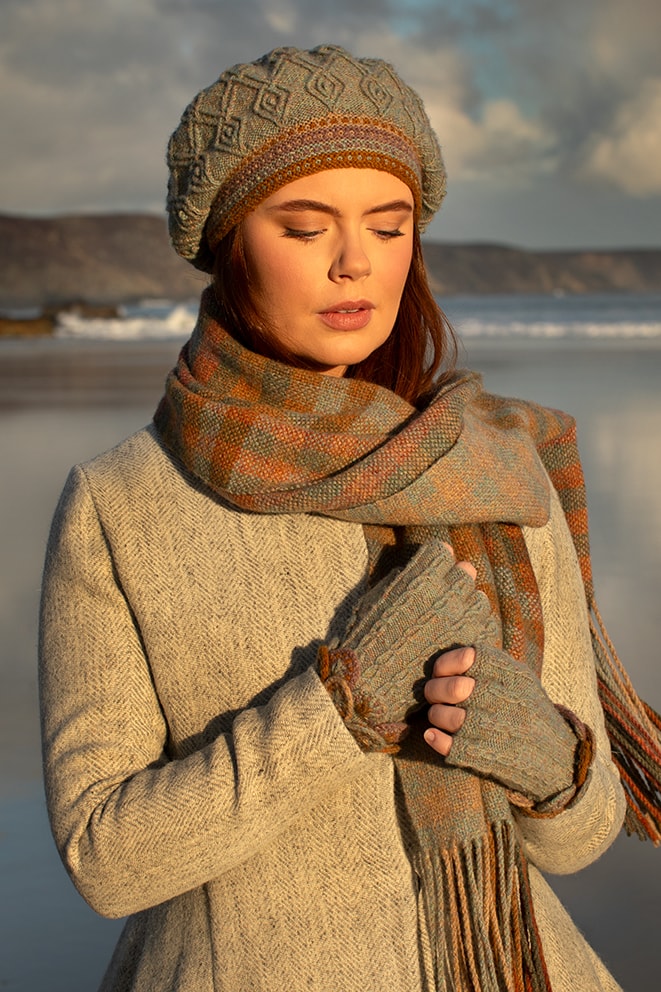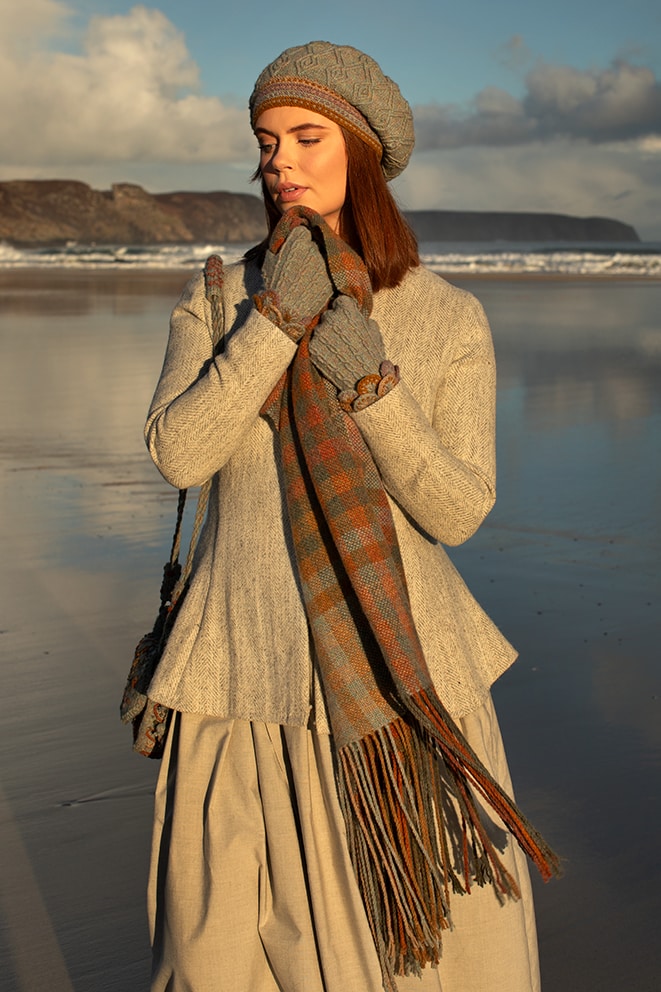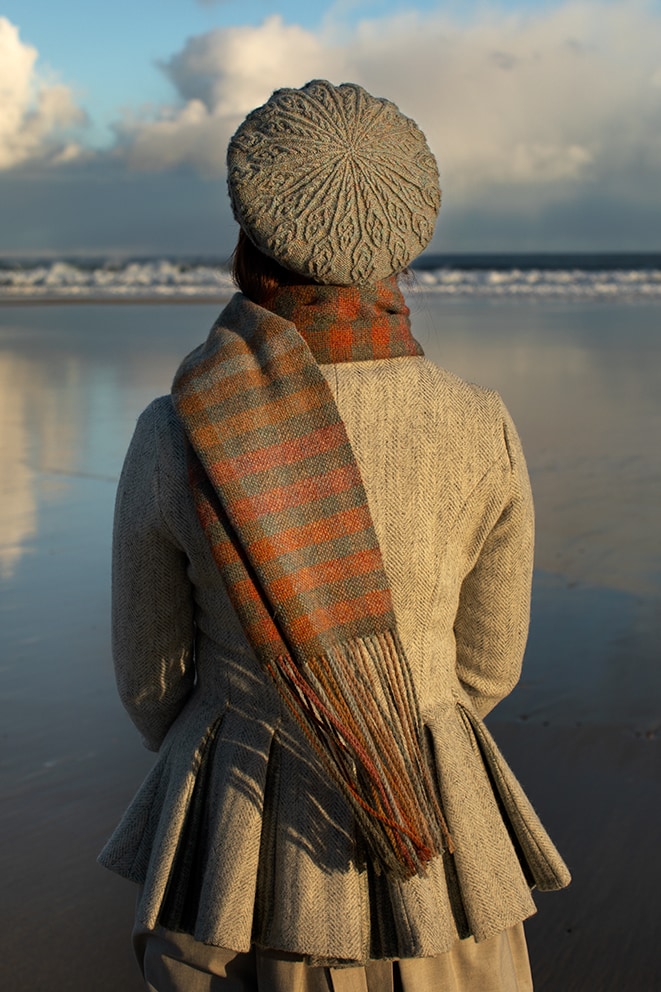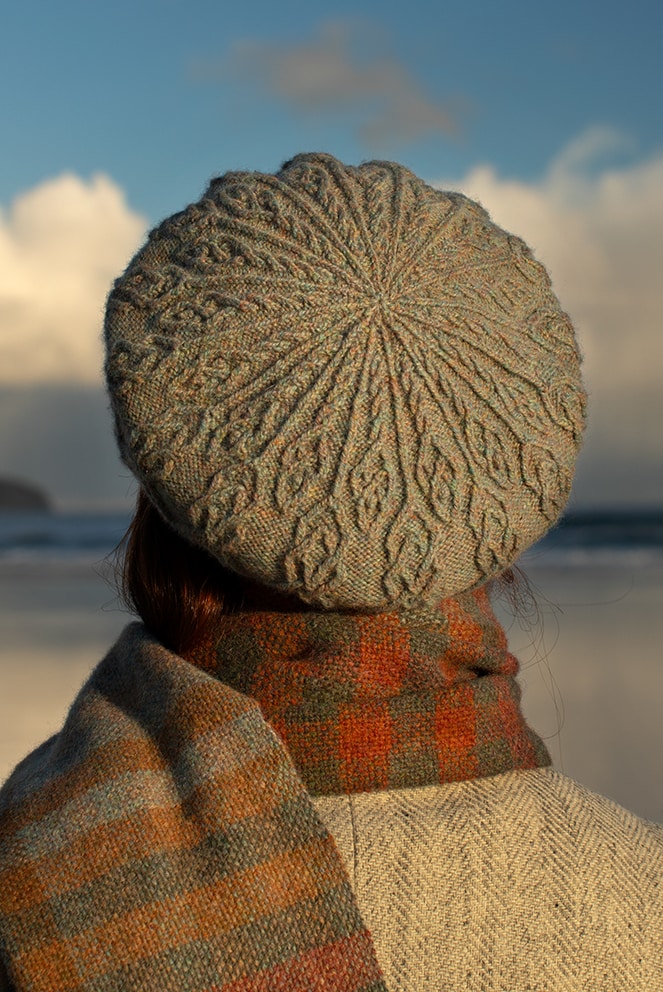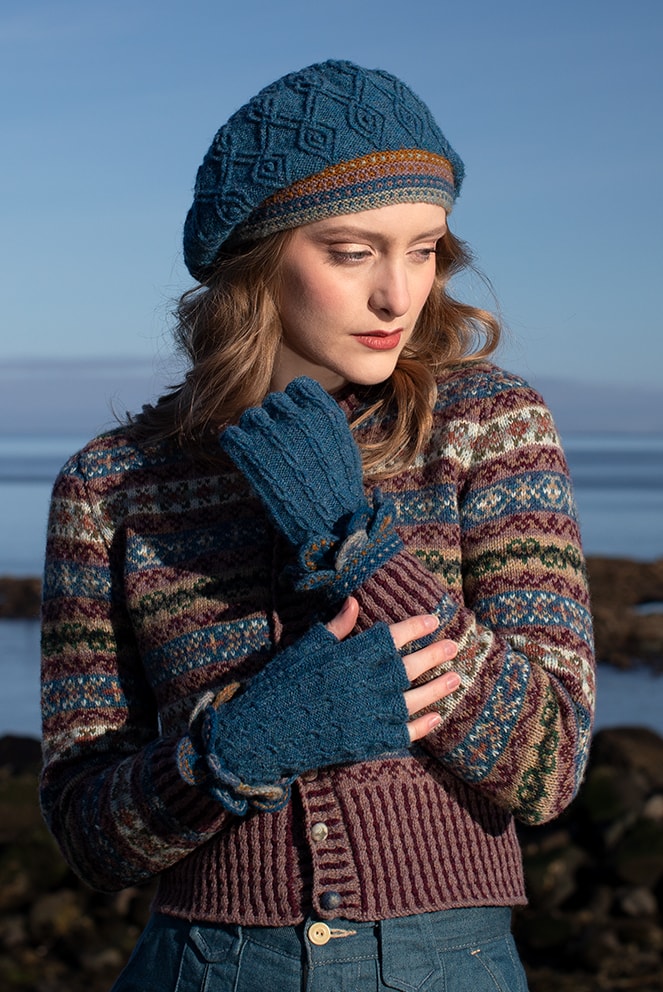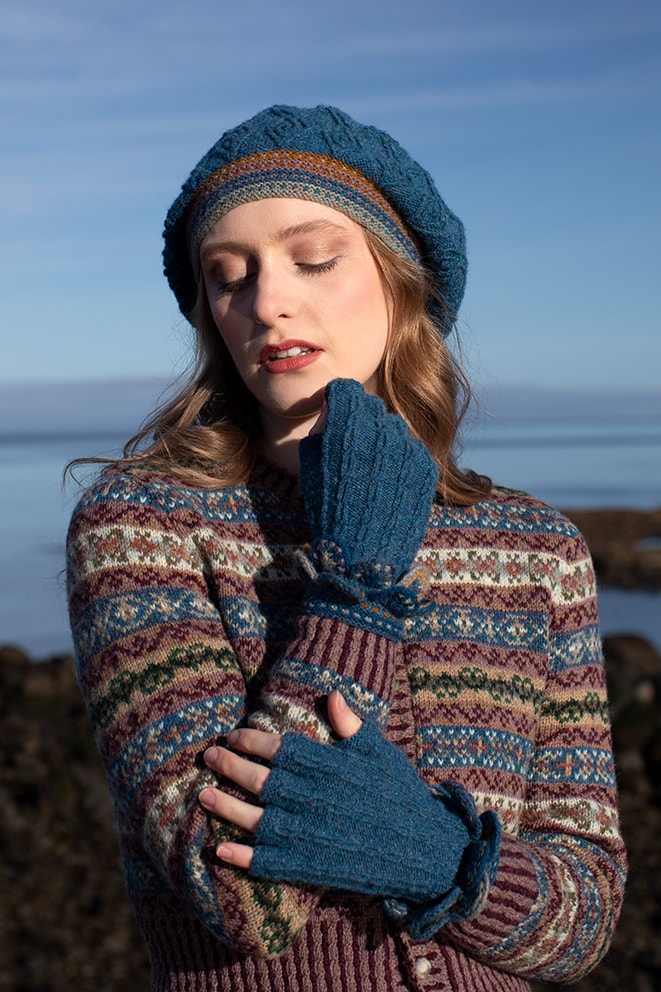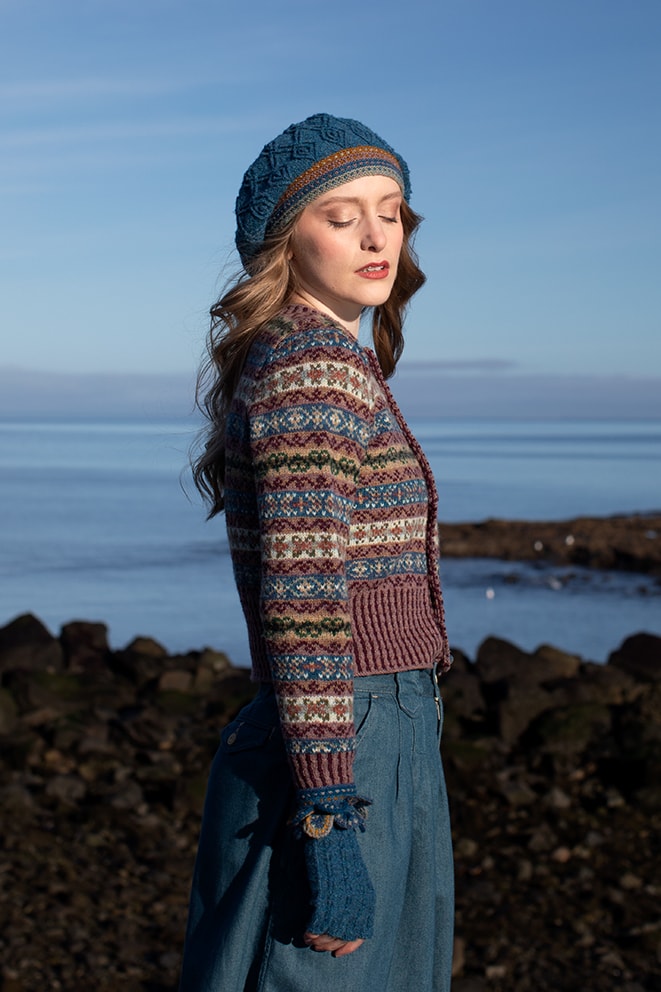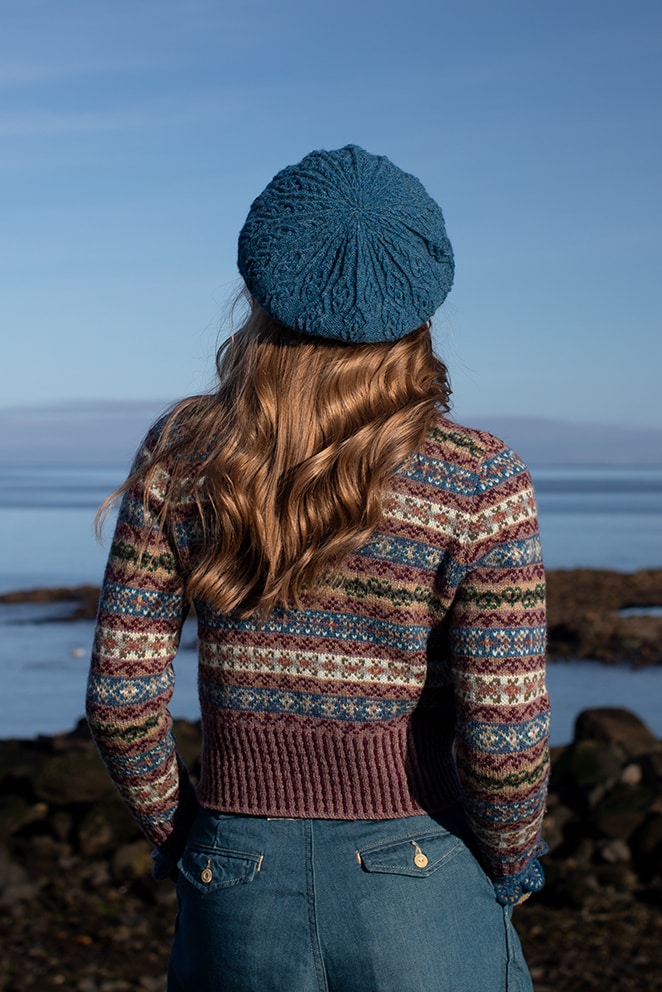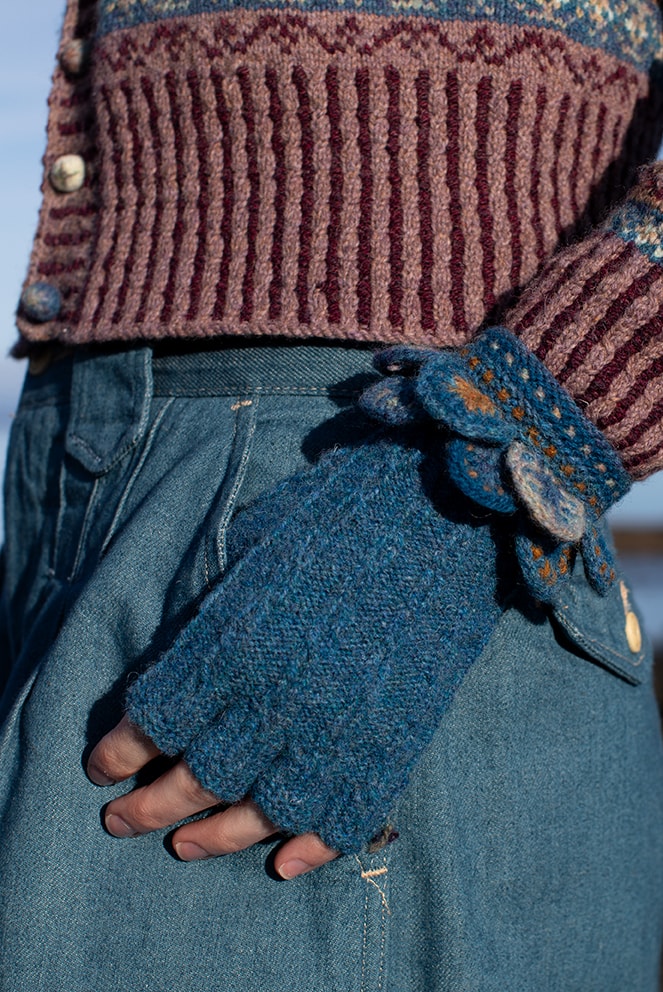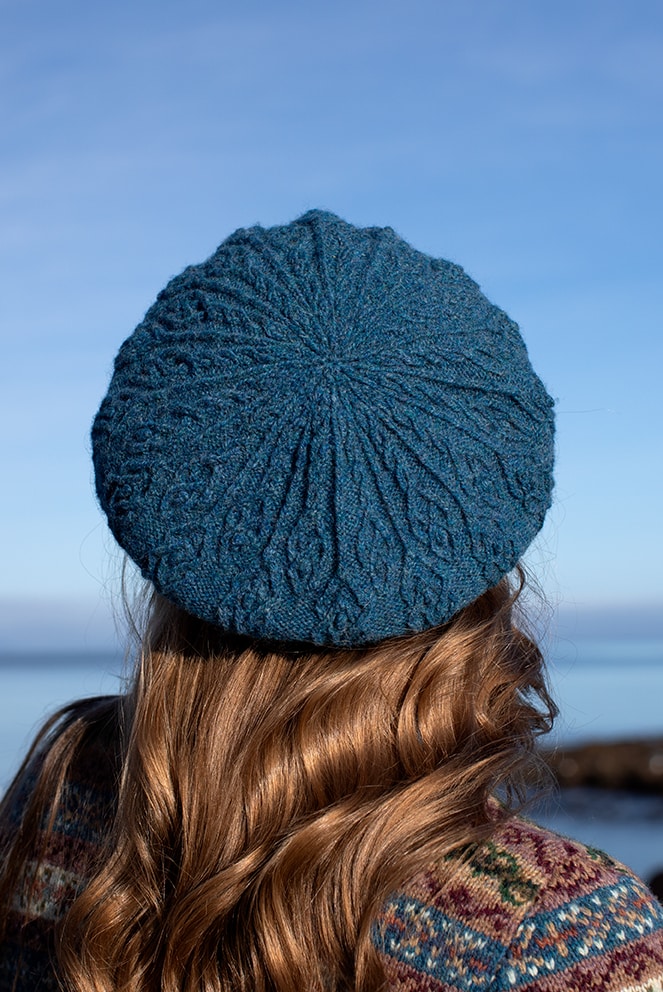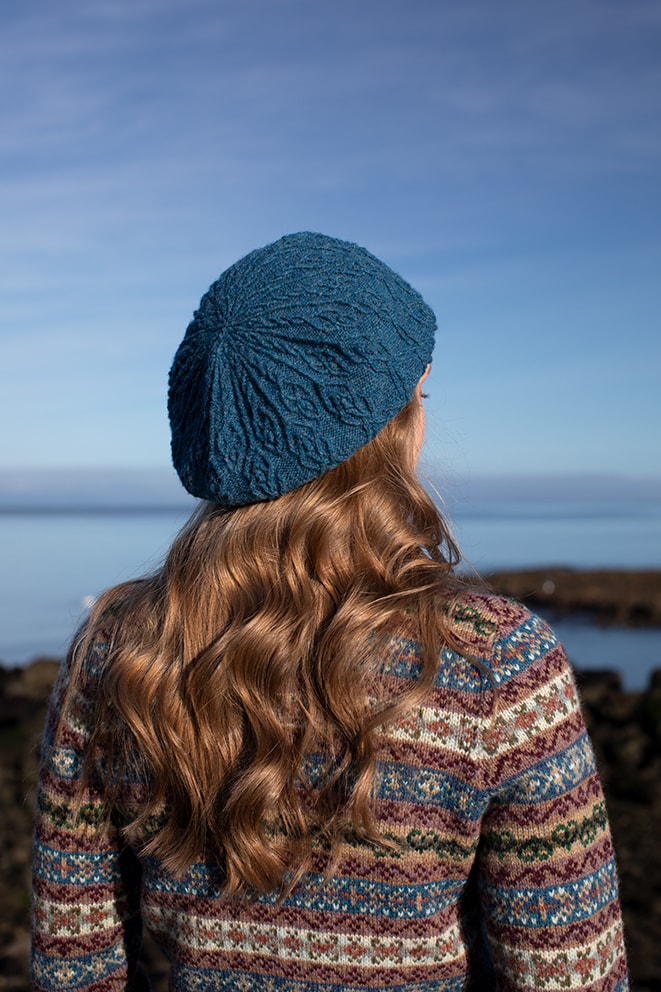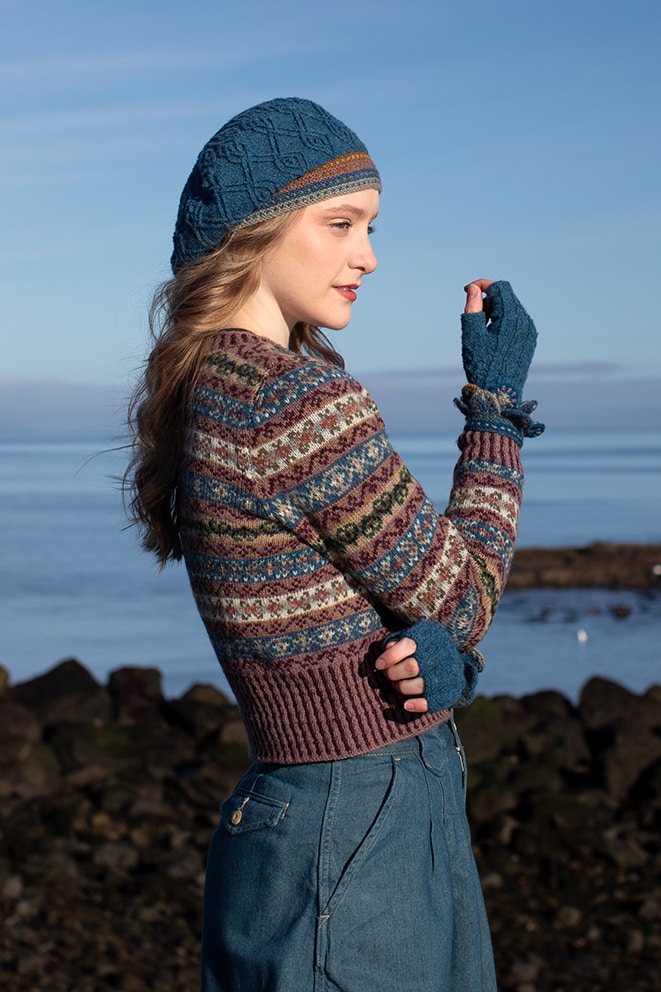Ruabhal Hat Set
Description
Measurements:Beret – Circumference 73cm. Brim to crown 27cm.Fingerless Gloves – Width around knuckles 19.75[20.75, 22.75]cm.
The Ruabhal Hat Set is composed of a beret and one pair of fingerless gloves in Alice Starmore™ Hebridean 2 Ply in a Main colour and 3 contrast colours. Both beret and gloves feature finely knitted closed cables and stranded textured colour knitting on the beret brim and the glove feathers and cuffs. I designed the beret pattern to expand around the circumference and then change in form to fit perfectly into the decreasing crown. The gloves are meticulously tailored to fit the hand shape and so this set will appeal to patient knitters who welcome a challenge in fine cabled knitting and intricate shaping on a small scale. This kit includes two colour-printed patterncards with full instructions and all the yarn required to make the Ruabhal Hat Set in your own choice of colours. The colours I used in the pale set of beret and gloves set shown here are a Main colour of Pebble Beach with Contrast colours of Golden Plover, Spindrift and Driftwood. The blue set is made in a Main Colour of Summertide with Contrasts of Pebble Beach, Driftwood and Golden Plover. The beret is made in one size and instructions for the gloves are provided in three sizes. Enough yarn is provided in the kit to make the largest size of gloves. The Ruabhal Hat Set is shown here with two woven wraps and a Sporan bag made in Hebridean 2 Ply, and with the Peigi Cardigan.
Click here for a digital shadecard of all Hebridean 2 Ply colours.
£64.00
Story
Taigh na Iteagan (The House of Feathers) sits on the shoreline, looking across Village Bay to Ruabhal (Red Hill). Looking from the feather store, Ruabhal’s eastern face presents a relatively benign view, and even now it is possible to make out ancient marks of ridges from cultivaton on its lower slopes. Evidence of stone quarrying and tool-making of possibly prehistoric date has been found among the scree. It is also a formidable rampart, sheltering the village from the Atlantic. Its western face has sheer slopes and terrifying, jagged cliffs dropping straight down into the ocean. This did not deter the men of St Kilda who scaled those cliffs for their bounty of birds and it was here, on a preciptous doorway-shaped outcrop known as the Mistress Stone, on the southern summit of Ruabhal, that the young St Kildan men traditionally pledged their troth. This custom was first recorded by Martin Martin who voyaged to St Kilda in 1698. He described the custom –“upon the lintel of this door, every batchelor-wooer is by an ancient custom obliged in honour to give a specimen of his affection for the love of his mistress and it is thus: he is to stand on his left foot, having one half of his sole over the rock, and he then draws his right foot further out to the left, and in this posture bowing, he puts both his fists further out to the right foot; and then after he has performed this, he has aquired no small reputation, being always after it accounted worthy of the finest mistress in the world”Standing, even with both feet on the lintel, was altogether too horrifying a prospect for me but as I stood in the doorway and looked down into the raging ocean I decided that I should design and knit something for a “mistress” that would display a level of finely-tuned skill which would match this awesome gallantry, if not in terms of life-threatening risk then at least in patience and concentration.
Alice
